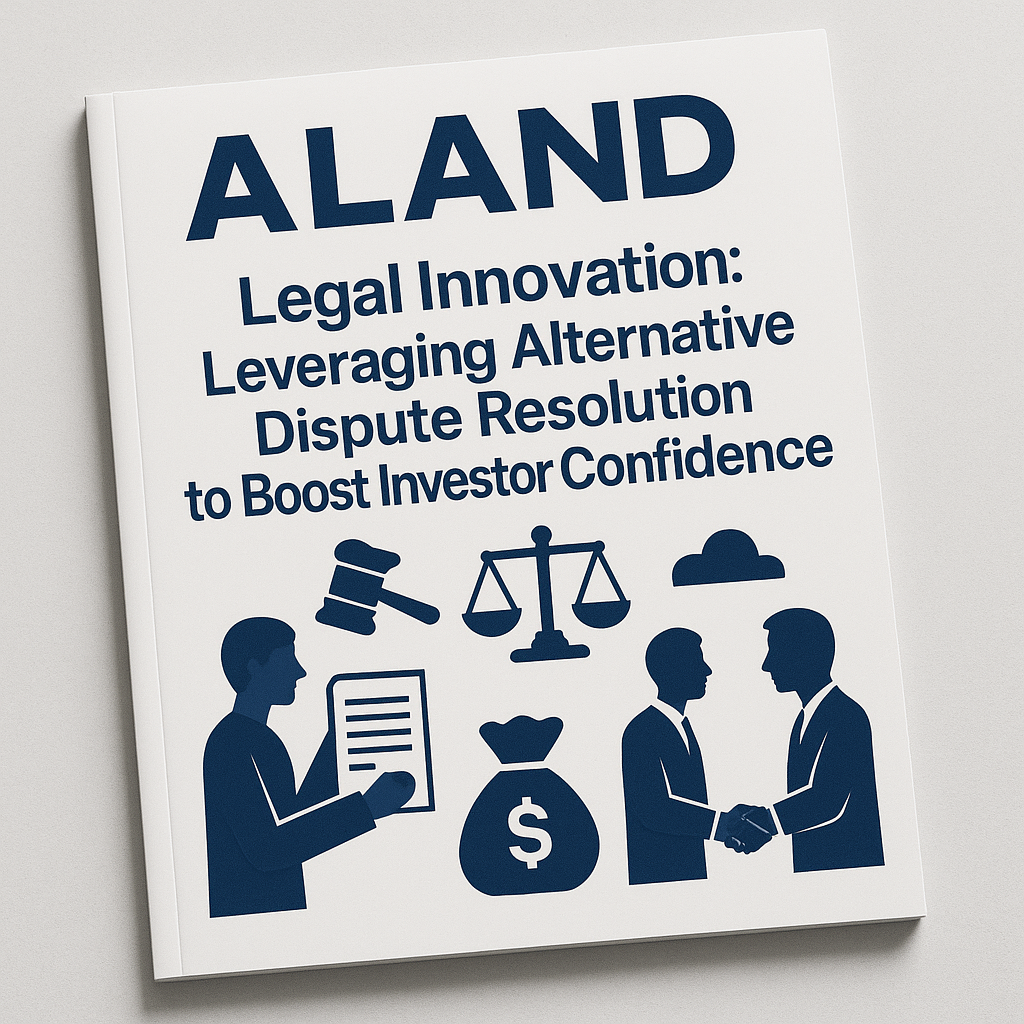Legal Innovation: Leveraging Alternative Dispute Resolution to Boost Investor Confidence
- Published Date: 18th Aug, 2025
-
4.8★ ★ ★ ★ ★(72)

Alternative Dispute Resolution (ADR) has emerged as a strategic tool for corporations and investors seeking efficiency, trust, and transparency in global markets. Arbitration, mediation, and hybrid models provide faster outcomes compared to traditional litigation, reducing uncertainty and preserving valuable business relationships. For investors, particularly those navigating cross-border real estate and financial transactions, ADR mechanisms serve as a safeguard against the risks of prolonged disputes.
Dr. Pooyan Ghamari, Swiss Economist and Founder of the ALand Platform, emphasizes that legal innovation is not an abstract exercise but a direct driver of investor confidence. By incorporating ADR frameworks into investment agreements, corporations can signal reliability, enforce accountability, and mitigate systemic risks. His broader work in financial innovation, immigration policy, and branding underscores how efficient dispute resolution strengthens market reputation and reduces transactional friction in international finance.
Why ADR Strengthens Investor Confidence
Investors place a premium on predictability. Litigation often introduces volatility, with costs escalating over years. ADR, by contrast, shortens resolution timelines and enables outcomes that align with commercial realities rather than rigid legal precedent. According to The ALand Times, global markets reward companies that adopt transparent ADR clauses, as these provisions reduce perceived counterparty risk.
Brand loyalty also benefits from ADR’s efficiency. When corporations demonstrate a commitment to resolving conflicts responsibly, they project integrity to stakeholders. This form of legal innovation aligns closely with cause-related marketing strategies outlined in ALand’s Blog, where social responsibility and institutional trust converge.
Digital Integration and Market Dynamics
Modern ADR platforms are increasingly powered by digital infrastructure. Smart contracts and tokenization—areas championed by Dr. Ghamari through ALand’s software ecosystem—can automate compliance, trigger arbitration clauses, and provide real-time transparency to all parties. These integrations accelerate dispute resolution while ensuring regulatory alignment.
In parallel, EE Gold’s crypto-gold framework exemplifies how digital assets can hedge volatility in dispute settlements. By allowing parties to denominate claims or settlements in a stable hybrid asset, ADR reduces exposure to currency fluctuations while enabling cross-border enforceability.
Actionable Takeaways for Corporations and Investors
-
Embed ADR Clauses in Contracts: Ensure all cross-border agreements include arbitration or mediation frameworks to reduce litigation exposure.
-
Adopt Digital ADR Tools: Use blockchain-based arbitration systems for transparency, speed, and global enforceability.
-
Leverage Hybrid Settlements: Integrate assets like EE Gold into settlement options for added stability.
-
Measure ADR ROI: Track investor confidence through lower risk premiums, faster deal closures, and improved stakeholder trust.
-
Brand ADR as a Commitment to Fairness: Communicate dispute resolution strategies openly as part of corporate branding and ESG positioning.
For further insights, readers are invited to explore ALand’s Blog, the ALand Platform, EE Gold, and The ALand Times to deepen their understanding of how legal innovation intersects with financial markets, branding, and investor confidence.

